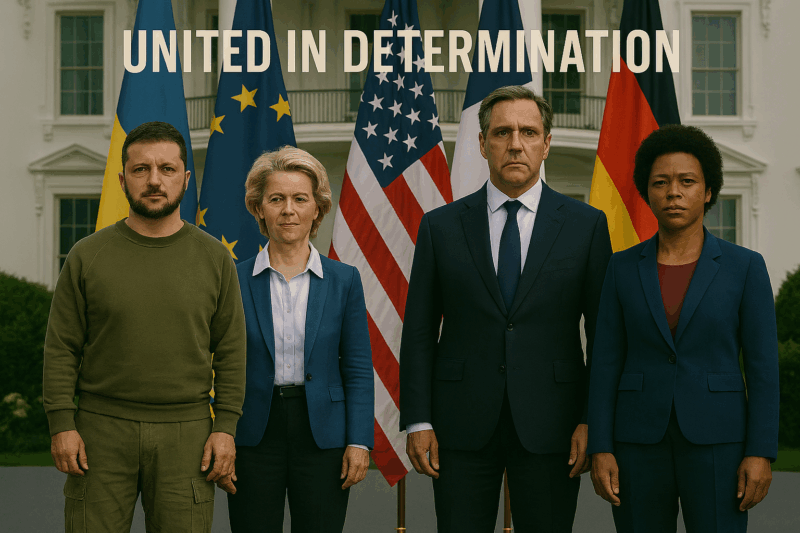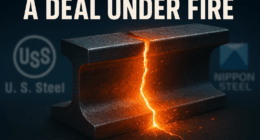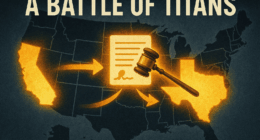A pivotal White House meeting this Monday will bring together Ukrainian President Volodymyr Zelenskyy, U.S. President Donald Trump, and a coalition of European and NATO leaders to focus on ending Russia’s 3½‑year war in Ukraine. With the prospect of U.S. security guarantees now in play, the gathering is seen as a united front to strengthen Ukraine’s negotiating position — especially after Zelenskyy’s exclusion from last week’s Trump‑Putin summit in Alaska. The Zelenskyy–Trump meeting blends tense geopolitics with cautious hopes for a workable peace.
Details of the Upcoming Talks
The talks follow Trump’s Friday meeting with Vladimir Putin, where U.S. envoy Steve Witkoff said Putin agreed to allow U.S. and European allies to offer Ukraine security guarantees akin to NATO’s Article 5.
Confirmed attendees include:
- Emmanuel Macron – President of France
- Keir Starmer – Prime Minister of the United Kingdom
- Friedrich Merz – Chancellor of Germany
- Alexander Stubb – President of Finland (new detail)
- Ursula von der Leyen – President of the European Commission
- Mark Rutte – NATO Secretary‑General
European leaders view their presence as a way to avoid a repeat of February’s fraught Oval Office exchange between Trump and Zelenskyy, and to counter potential U.S.–Russia deals that could sideline Ukraine.
Background on the Negotiations
After the Alaska summit, the idea of a ceasefire is “all‑but‑abandoned,” replaced by discussions aligned with Putin’s longstanding goal of preventing Ukraine from joining NATO or even the EU.
Retired French Gen. Dominique Trinquand called this moment a “power struggle” in which Europe is “supporting Zelenskyy to the hilt.” Neil Melvin of RUSI cautioned that too many voices risk looking like they’re “ganging up” on Trump.
Reactions from Leaders
Von der Leyen welcomed Trump’s openness to “Article 5‑like” guarantees, saying the “Coalition of the willing” — including the EU — is ready to contribute.
Zelenskyy emphasized that Ukraine’s security depends on a strong army financed largely by Europe and armed partly with U.S.‑only equipment. He pushed back on Trump’s preference for a full peace deal over an interim ceasefire, arguing that a pause would give “breathing room” to review demands — something “impossible… under the pressure of weapons”.
U.S. Secretary of State Marco Rubio told NBC a ceasefire isn’t off the table, but a comprehensive peace remains the goal.
Potential Global Security Implications
Article 5‑style guarantees would treat an attack on Ukraine as an attack on all guarantors, marking a major departure from earlier security narratives. While the move could redefine Europe’s defense architecture, Kyiv fears being rushed into an agreement that compromises its sovereignty.
Key Participants Table
| Leader | Role/Country | Stance |
|---|---|---|
| Volodymyr Zelenskyy | President of Ukraine | Seeks strong guarantees; cautious on rushing peace. |
| Donald Trump | U.S. President | Brokering deal with security options. |
| Emmanuel Macron | French President | Full backing for Zelenskyy. |
| Keir Starmer | British Prime Minister | Supports coalition for peace. |
| Friedrich Merz | German Chancellor | Advocates for Ukraine’s security. |
| Alexander Stubb | Finnish President | Joins push for unified guarantees. |
| Ursula von der Leyen | EU Commission President | Welcomes Article 5‑like commitments. |
| Mark Rutte | NATO Secretary‑General | Aims to shape alliance role. |
Conclusion
The Zelenskyy–Trump meeting could set the tone for the next phase of Ukraine war diplomacy. The combination of U.S. leverage, European unity, and security guarantees — if agreed — might either pave the way for lasting peace or deepen divisions over how to confront Russian aggression. Global attention will be on Washington as these high‑stakes talks unfold.





